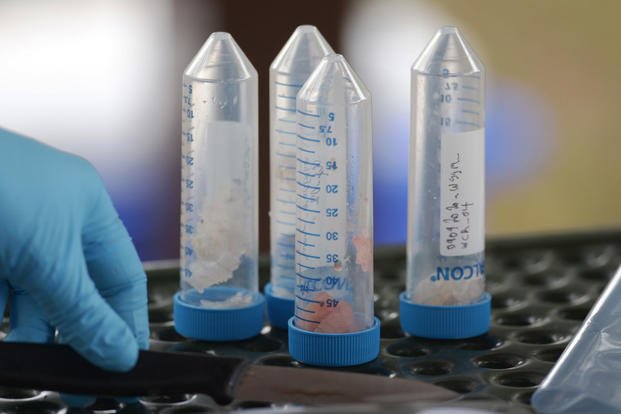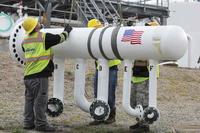Jefferson Lab in Newport News, Va., recently received a $7.5 million grant from the Department of Energy to adapt a particle accelerator that could eventually be used in water treatment plants to break down “forever chemicals.”
The technology is currently lab-locked but Jeff Lab staff scientist John Vennekate, along with accelerator scientist Gianluigi Ciovati, is working to develop a compact accelerator for wastewater remediation.
“This funding will help bridge the gap between our current proof of principle of this technology and a level where, with more time and investment, we could make a demonstrator that could be used by industry,” Vennekate said.
Per- and polyfluoroalkyl substances — or PFAS — are a class of compounds used to make products resistant to water, stains and grease. The military contributed to PFAS pollution with its use of firefighting foam laced with the chemicals. The foam was used during military training exercises in the 1950s, but has since been limited to emergency situations, the Navy has said. The substances have been dubbed “forever chemicals” because most do not degrade in the environment.
Public concern for PFAS trickling into neighborhoods by way of groundwater grew in 2023 when the Environmental Protection Agency recommended a national standard for the contaminants in drinking water. Its proposed rule outlines that PFAS should have a concentration level much further below the agency’s previous guidance of 70 parts per trillion to be considered safe.
Following the EPA’s proposed regulation, the Department of Defense in September launched investigations into more than 700 facilities suspected of potential PFAS contamination posing a pollution threat to drinking water for nearby communities. The September briefing detailed that about one-third of the facilities had been investigated and that “forever chemicals” are trickling out of at least 245 U.S. military bases.
In recent years, site inspections have been conducted at or near installations across Hampton Roads, including St. Juliens Creek Annex and Naval Air Station Oceana. At St. Juliens Creek Annex, 21 on-base groundwater samples were found to have PFAS properties above 70 parts per trillion, officials with Naval Facilities Engineering Systems Command said in February. In Virginia Beach, 15 off-base, private drinking water wells were tested for perfluorooctanoic acid and perfluorooctane sulfonate in November 2022, with one testing above 70 parts per trillion, said David Todd, spokesperson for the command.
But these chemicals may not be as forever as scientists once thought. Vennekate said studies now show PFAS can be broken down by electron beams generated by superconducting radiofrequency particle accelerators to the point that the chemicals are harmless.
One of the biggest challenges the Jefferson Lab team must tackle, he said, is ensuring the accelerator is operable by industry staff — not just scientists.
“They need to be able to use the machine without multiple folks with Ph.D.s in accelerator science around,” Vennekate said.
Malachi Schram, head of Jefferson Lab’s data science department, will help the team develop a framework for an automated control system with integrated machine learning to run such compact accelerators.
“Ideally, at some point, the sensor will reach a push button interface for the customer,” Vennekate said.
In the past, researchers struggled to rein in costs while scaling up accelerator prototypes powerful enough for big wastewater plants because the accelerators required liquid helium, which is difficult to keep in an industrial setting and very costly, Vennekate said. But new technology has eliminated the need for liquid helium, with the accelerators instead relying on niobium-tin coatings, cryocoolers and copper cladding.
Exactly how much the accelerators will cost has not been determined, he said.
Jefferson Lab is working with California-based General Atomics, a technology company interested in manufacturing the accelerators for commercial use. Being able to demonstrate the novel capability of the technology can help bring the private sector on board, said Drew Packard, a scientist at General Atomics
“SRF (superconducting radiofrequency) technology has great untapped potential to revolutionize approaches to environmental remediation and forever chemicals, making the world cleaner and safer,” Packard said.
_____
©2024 The Virginian-Pilot. Visit pilotonline.com. Distributed by Tribune Content Agency, LLC.












